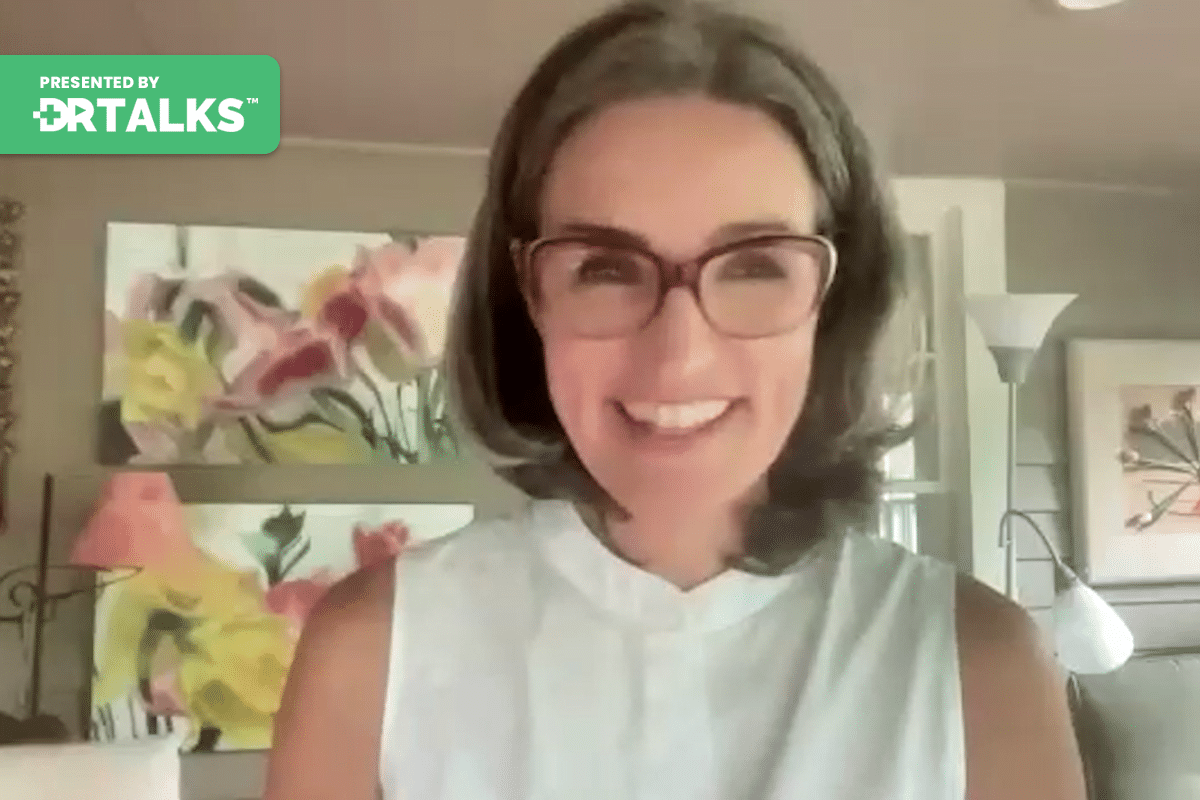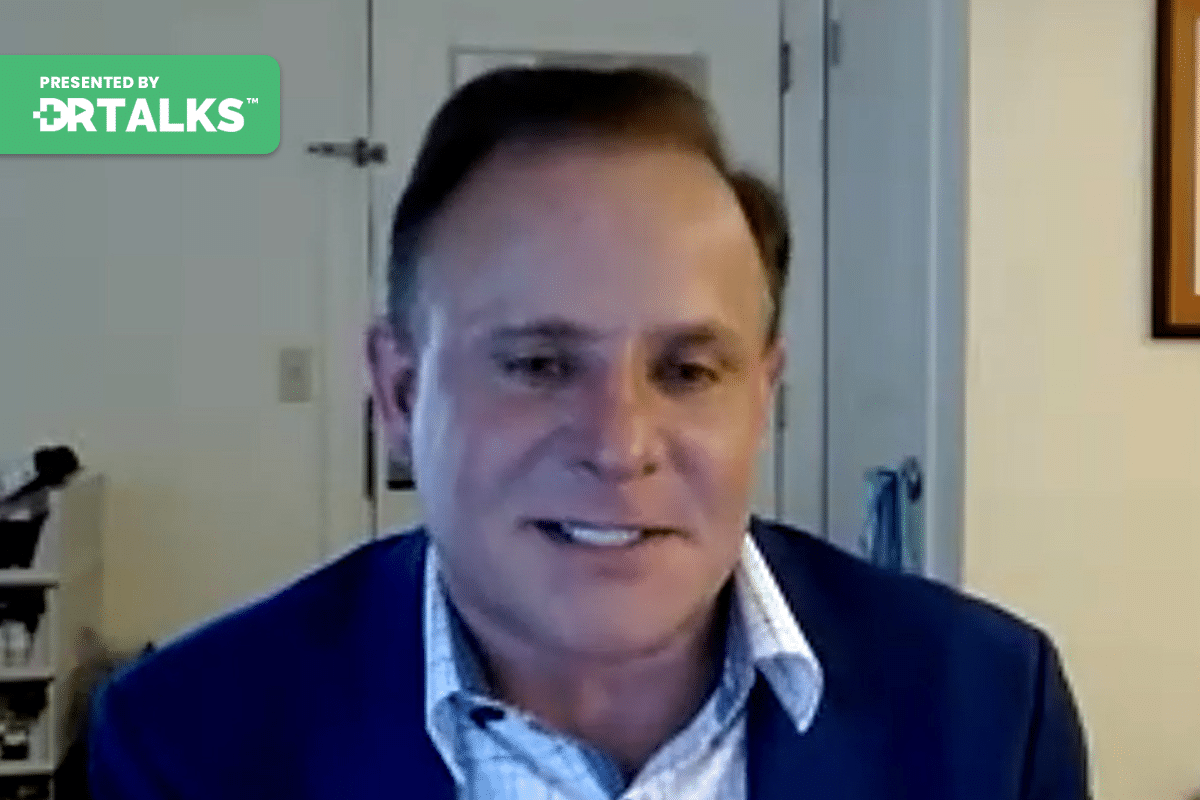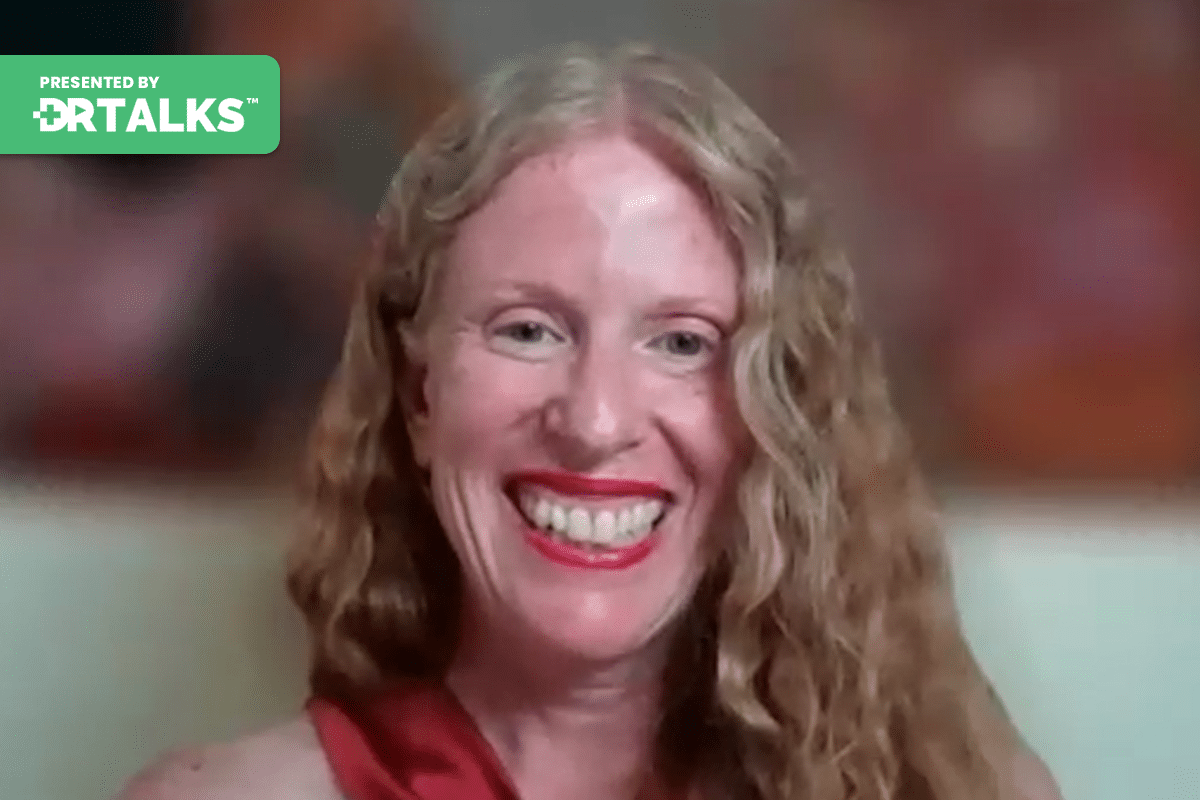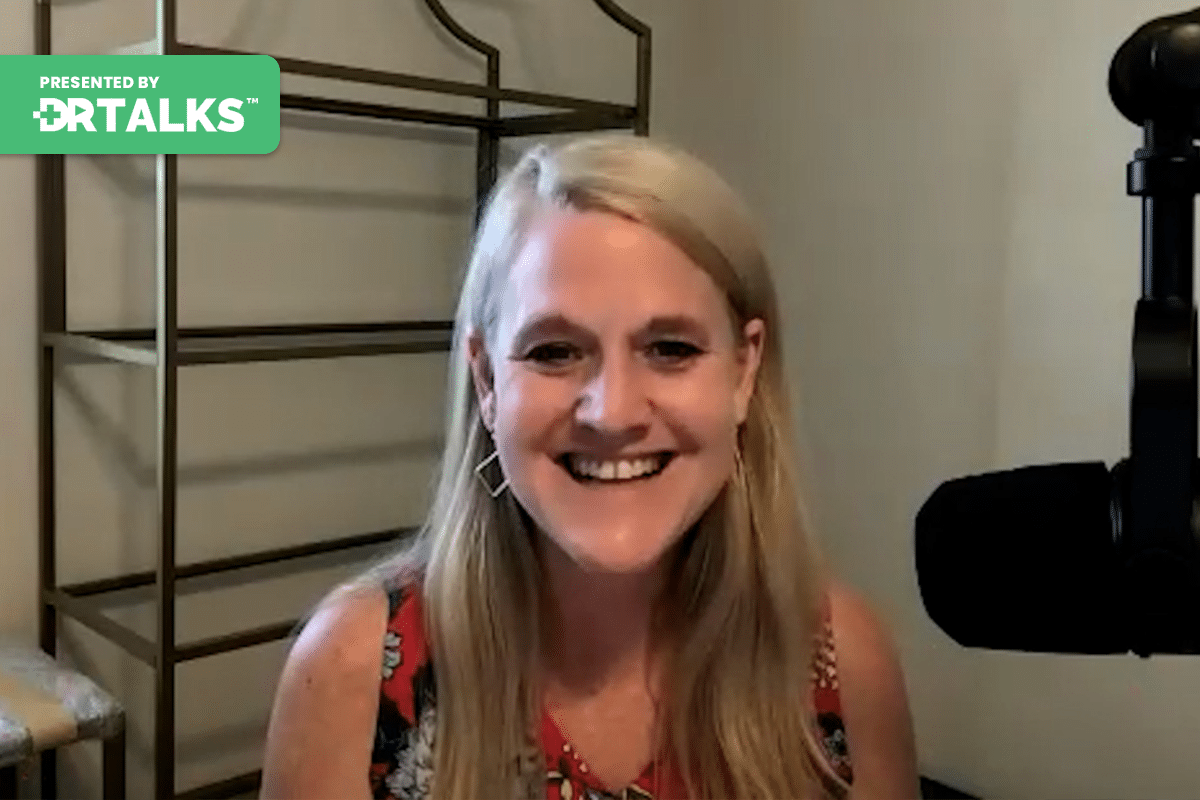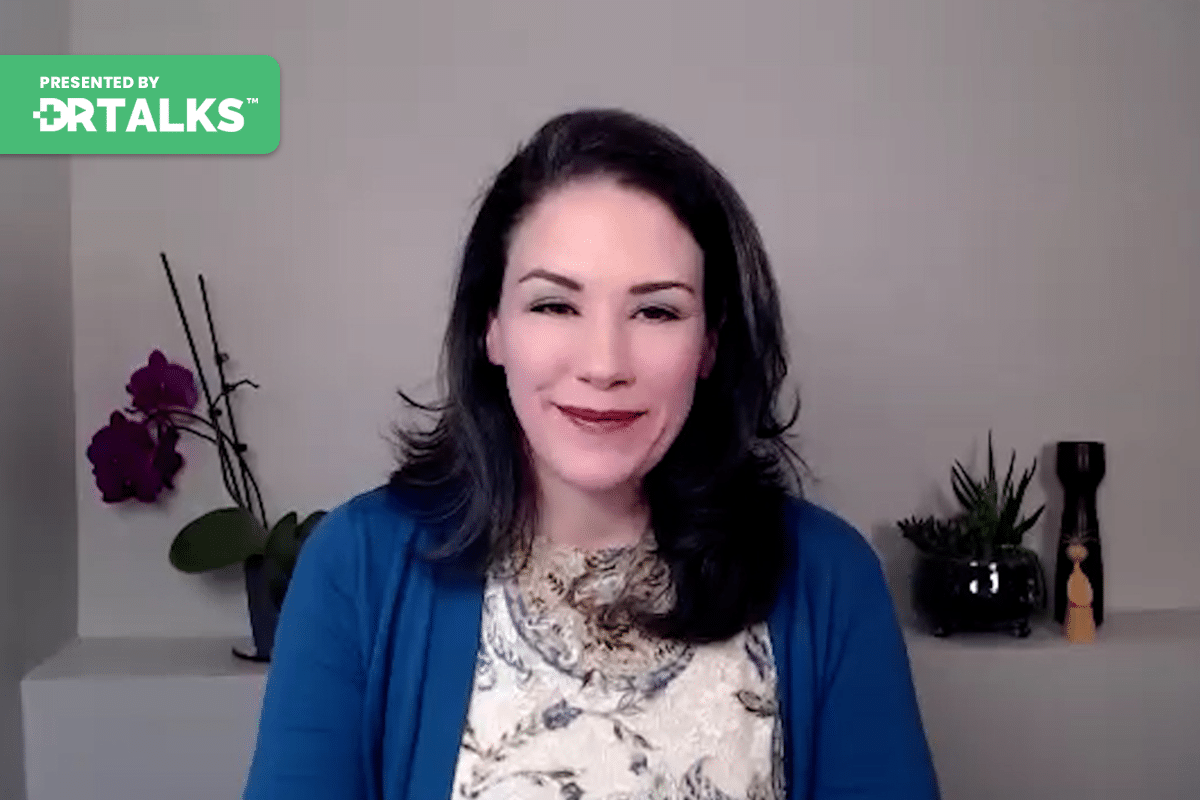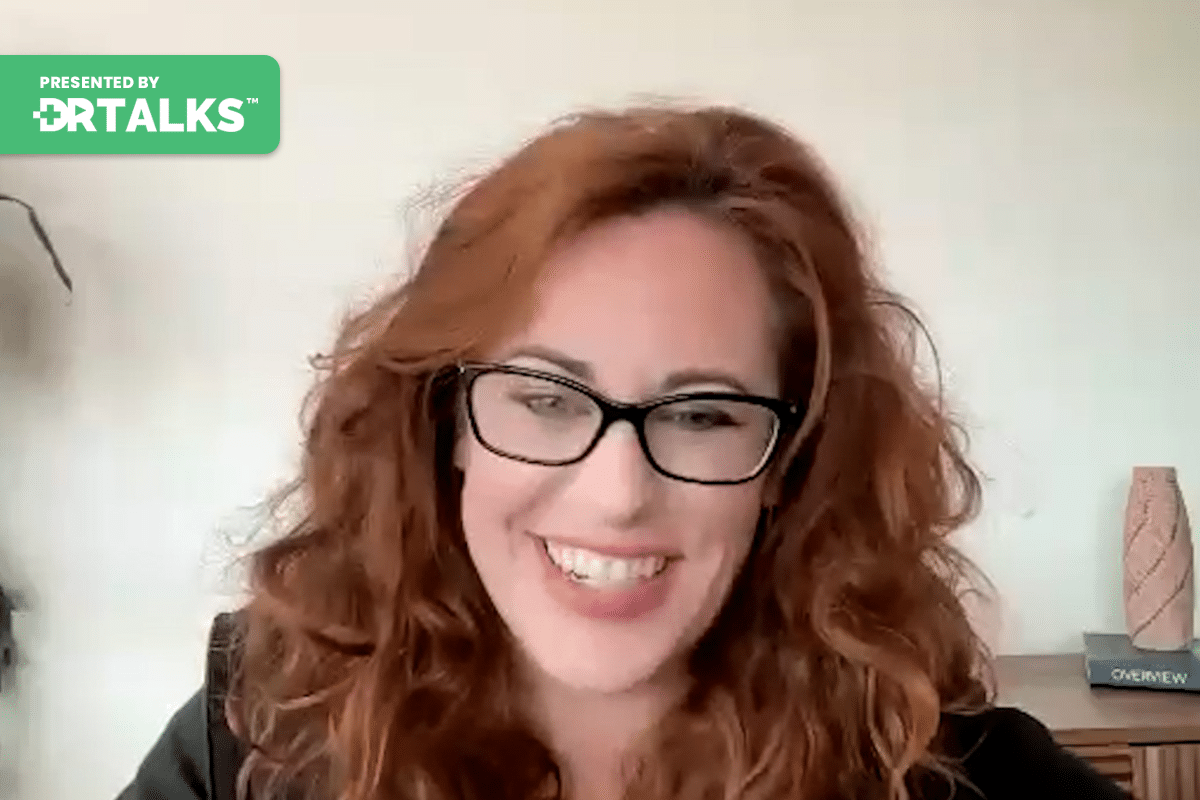Join the discussion below
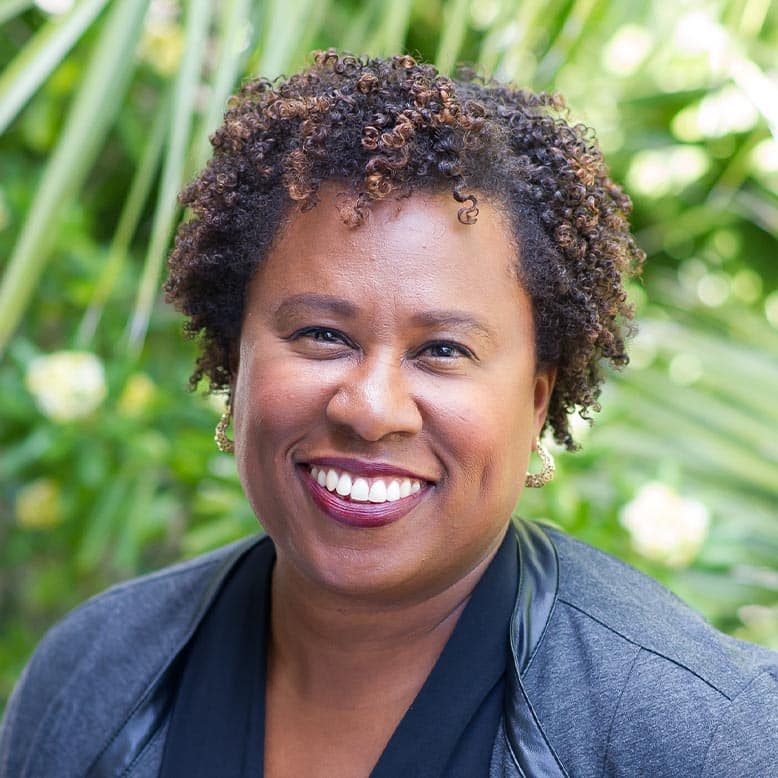
Dr. Beverly Yates ND is a licensed Doctor of Naturopathic Medicine. She is the nation's leader in online type 2 diabetes care. Her virtual practice has programs and supplements to help people lower their blood sugar naturally, at home, without ever having to step foot in a clinic. Dr. Yates... Read More

Margaret Floyd Barry, RWS, NTP, CGP, FNTP
Margaret Floyd Barry is a functional nutritionist, writer and real food advocate who’s been on the pursuit of the most nutritious and delicious way of eating for the better part of her adult life. Having seen family members suffer the devastating effects of chronic illness from a young age, Margaret... Read More
- Embrace the power of implementation for a successful health journey
- Understand the importance of choosing the right health professional to guide you
- Build resilience, embrace change, and develop self-knowledge for sustainable health improvements
- This video is part of the Reversing Type 2 Diabetes Summit
Related Topics
Diabetes, Exercise, Health Coaching, Health Journey Strategies, Mental Health, Mind, MindsetBeverly Yates, ND
Hey, everyone. Welcome to the Reversing Type 2 Diabetes Summit. I am your host, Dr. Beverly Yates, ND., with this episode, it is my distinct honor and pleasure to interview with Margaret Floyd Barry. She is a wonderful expert, a person who really lives the work and walks her talk and cares deeply about health and making sure people understand their role in their health. She also teaches others about this too, so that way she can spread the goodness and multiply the impact that she has in this world. I really appreciate knowing her. She’s a functional nutritionist, a writer, and a real food wholefoods eat actual food advocate who’s been in pursuit of the most nutritious and delicious tasty way of eating For the better part of her adult life, she’s seen family members who’ve been suffering from the devastating effects of chronic illness from a young age and help them and cared about it.
Like, Can we do this differently? And yes, we can, right? Margaret has long had a desire to help others find a better way back to optimal health and well-being through years of experience with the most complex client cases, including reversing her own autoimmune condition, Margaret has established a powerful system for restoring health by addressing the root cause of illness. Today, she teaches fellow practitioners the same proven system and needs are people from all over the world that she gets to work with and they get to work with her and get her pearls of wisdom, her gems, and insights. Get clients these life-changing results through Restorative Wellness Solutions, a two-year comprehensive functional nutrition certification program for qualified health professionals.
Beverly Yates, ND
So, friends, this is how we magnify and multiply our impact. She really does it. She’s also the author of Eat Naked, Unprocessed, Unpolluted, and Undressed Eating for a Healthier Sexy You and The Naked Foods Cookbook. All right, Margaret, welcome to the summit.
Margaret Floyd Barry, RWS, NTP, CGP, FNTP
Oh, thank you so much. I am really excited to be here today, and I’m especially excited about what we’re going to talk about.
Beverly Yates, ND
Super, super. And, you know, I reached out to you specifically about this topic, talking about these strategies and mindset and, you know, people’s personal power, because it’s been my observation that many people with type two diabetes, with pre-diabetes, any kind of blood sugar dysregulation issues, glycemic control problems, often struggle with self-care. And it’s not that they don’t care about themselves, but sometimes there’s just too much demand on them and in particular their real struggle. The core of it seems to be around the issue of making sure they meet their own needs first, that looking at things from how can I be well, and then I can’t care for others or another way to say that is that people struggle with that kind of priority because maybe their social system, their cultural beliefs, whatever it might be, that really may not have been kind of. Okay, so we’re going to unpack this. So I’m glad you’re here.
Margaret Floyd Barry, RWS, NTP, CGP, FNTP
Excellent. Yeah, so much to talk about. And I think it’s one of those things that we can be tempted to write off and be like, Oh, that part’s the easy part, but it’s actually the part that hooks up so many people. So, you know, one of my goals and outcomes for our conversation here together and for anyone who is watching this is that I know at this point you have seen so many incredible experts. You have probably learned a ton of things. And my deepest hope is by the end of this talk, you have picked those things that really resonate for you and that are your actual next steps. And you figured out a game plan for actually making it happen because knowledge is fantastic, but it is the first step and it is not going to actually be the thing that changes your life. You have to act on that knowledge. That’s what we’re going to dig into because it sounds simple, but sometimes it is simple but doesn’t mean it’s easy.
Beverly Yates, ND
So that’s exactly the important distinction. All right, let’s do this. Why is it so hard for people to actually make the change that they want to make? They have that desire, Right. But then sometimes it doesn’t work out. So they come to a summit like this. They learn from incredible experts like yourself. They get all jazzed. They get all excited about it. But how can we help them to actually take what they learned and turn that action specifically in their own lives?
Margaret Floyd Barry, RWS, NTP, CGP, FNTP
Well, first of all, I just want to acknowledge that it is so incredibly human and natural to get really excited by the new information and to then get busy in your life and just keep going. Right. Like that is I, I am like the most guilty of this, right? Like I learn a new thing. I think it is fantastic. And then I have so much going on already that I’ve committed to how on earth am I going to fit this in? And it’s really tempting to just assume we’ll get to it, assume we can make a change, or if it sounds simple, then it’s just going to kind of happen. And actually, the implementation is the most important piece of it, because in this line of work, if you don’t do the thing, then you’re not going to get the health results. Like learning something is really helpful, but it’s not going to take you across that finish line. You have to figure out how to do it. And doing it isn’t something that happens by accident. Doing it takes intention, it takes planning, it takes commitment, and then it takes that action. So it’s a multi-step process and we tend to just sort of think it will happen on its own because we have really good intentions. I think most of us get to the intention stage of it, right? Like we have all the intentions in the world, but do we then take that to actually like planning like, well, what does this actually look like in my like, how am I you talked about like prioritizing yourself? What does that actually look like? What are it was this tangibly going to be? How do you know when you’re going to be successful and when you figured out very specifically what it is that you’re going to do, how do you commit to actually doing that when you’ve already got all this other stuff going on in your life?
You’ve already got your habits, right? So, you know, we want to make sure that we take that extra step as we’re learning to think past the learning to actually the doing. So that’s a there’s a mental conflict. You need to be thinking past the learning to the doing so that step one and you want to be aware of what is needed, what do you need in order to be successful in this and to not overcommit? So I’ve just kind of added a whole lot of things, each of which we can unpack here. But I think the key is that you need to mentally be aware that you’re you as if this is your tendency and you’re resonating with this and thinking like, Oh my gosh, yes, I’ve signed up for a lot of summits, I’ve learned a lot of things. I haven’t actually done that many. Or maybe you’ve done a couple of things, but not as many things, or you’re just not where you want to be. Then you want to realize that you have to take that next step, and it’s something that needs to take intention and time. So you want to be aware of it, and then you want to pick the things that you’re actually going to integrate. And we can talk about what that looks like. But step one is to recognize this is a thing and to pick the thing that you want to integrate.
Beverly Yates, ND
Absolutely. Absolutely. These are just essential, you know, good wishes and good thoughts are great info without action is not the same thing. Not the same thing at all. And so I know a lot of times that people attend summits and things of this nature. They are reaching and seeking and searching and then they’re like, okay, that was great. And then a few weeks later, momentum is lost. So here in the session, we’re talking about what does it takes to close those gaps and make it effective, right? So then, Margaret, when people are working with others, if they work with a health professional to support them on their journey, what qualities do you believe are essential for the health professional to possess in order to provide meaningful support and guidance throughout someone’s health journey?
Margaret Floyd Barry, RWS, NTP, CGP, FNTP
A 150. This is really key. I think that you know, the absolute basics that we’re thinking of when we’re looking for a health practitioner are things like someone who has expertise in the area where you need support. Yes, someone who has helped somebody like you get the result that you’re looking for, that kind of track record. I’m a big believer in personal referrals. I think these are the absolute basics and they go without saying. I think a really important question to ask beyond this is, do they have this expertise to help people implement? Are they going to hand you a set of recommendations and leave you on your own to go figure it out? Or do they or someone on their staff? It doesn’t have to be that oftentimes the person making the recommendations and the person who’s actually going to hold your hand for that process are two very different people as to have actually very different skill sets. And so do they have resources for you to help make this happen? Because there are certain ingredients to actually making that change, which are essential, right? Like they need to understand, for example, how do you make change? You might be that person who just likes to go hard and go all out, and that’s your personality. Like, you know, I’ve had those clients where I’ve tried to take it step by step because that’s a little bit more my approach. And they’re like, Oh my gosh, you’re making me crazy. Just tell me what I need to do and I’m going to go do it. So you need to understand both the learning style and the behavior change style of your client. You’re laughing. You’ve seen this before, right, where you try to put your style to your client and they’re like, Nah, I want it this way. And we got to listen to that. So for the practitioners in the audience be listening to this because you need to be listening to your clients or your patients and understanding how they make change so that you can set them up for success with that. So we need to understand that process. You need to have, as I said, you need to pick the priority items that are going to have the biggest impact. And this is, you know, what is the formula for that? There’s there’s different things. It’s going to depend on so many different factors.
And this is one of the reasons why it’s so helpful to work with a health professional who specializes in this because they’ll be able to help you figure out where you’re going to get the biggest bang for your buck because there are so many things you could do. There are so many supplements you could take. There are endless lifestyle hacks, right? I mean, there’s so many things. But for you in your specific scenario right now, at this point in your life, what is going to be the thing that moves the needle the most? And you need to be able to figure that out. You need to have somebody who then can help you look at the context of your life and figure out, how are we going to fit this in. I’m going to use a really basic example here. But let’s say one of the biggest needle movers for you is sleep. Okay. Let’s say that what you need to do is you need to you know that you’re that person who, you know, you get that second wind, you find yourself scrolling through Instagram in bed. You have all the intentions.
You’re in bed at 10:00 and one in the morning. You are still like doing this on the phone, right? You know the thing, you know, you need to go to bed. But it’s so much easier to say, like, you know, it, but what systems do you need to set up to make sure that you actually get in-bed phones, not in the room, you aren’t tempted. You’re doing other things to replace it. You need to still unwind. Unwinding is a beautiful thing. That desire to unwind that we have when we pick up our phones and we just want to tune out. It’s a beautiful desire. We need to unplug, but we need to unplug. So there are other ways to do that. What does that look like for you and how can you create a system and a support around it? You know, getting other people on board is such an important part of this process as well. So if that’s a thing that you and your spouse or your boyfriend or girlfriend do when you get into bed is that you pick up the phone and start to scroll. And you both know, well, if one of you stops that habit, but the art is trying to stop that habit and the other doesn’t right there, that’s going to set up a tension. And right there, all of a sudden we’ve got a relationship conflict because of a really well-meaning interest in trying to take care of yourself. So this is it because it seems like a really simple, basic example, but this happens all the time in all the things around foods that we’re eating, around getting to the gym, or not around learning to take a new supplement at a specific time. Like all of these things are new habits and we need to think of it. You know, my goal for anybody that I’m working with and my goal for myself is always we want these habits that support us, that self-care you were talking about. We want that to be as automatic as brushing your teeth when you wake up in the morning.
Right. Like, my guess is most people watching this, they don’t have to like talk themselves into brushing their teeth in the morning. If you do, then we have maybe we should have another conversation. But for most of us, that’s just like you go to get up, you go to the bathroom, you do your thing, you brush your teeth. It’s just like what you do. And that is where we want to get you with this self-care that it’s just it’s beyond non-negotiable. It’s just who you are and how you show up. And it takes time to get there. But back to the original question, which I kind of digress from, but what do you want from a health professional? You want someone who is not only, is going to give you excellent recommendations, you want that person to understand the real context of your life and have either resources that they will provide or someone on their team or someone they can direct you to who can help you make it happen. Because what I just shared, that’s a simple example, but it is not easy. It is not easy. All sorts of behavior happen patterns that you know, that are so deeply ingrained around, I’m sure, why we’re doing the thing that we’re doing that we know it’s hurting ourselves. You got to we just got to recognize that that is essential and it needs to be supported.
Beverly Yates, ND
Absolutely. Absolutely. So well-said. Thank you for that. So now that you’ve been talking directly here about behavior, let’s take a look at that. Let’s talk specifically about behavior change. You know, these shifts that need to occur. Why is it so hard and what are some ways that people can set themselves up for better success?
Margaret Floyd Barry, RWS, NTP, CGP, FNTP
Well, I think the first thing is to recognize the fact that behavior is hard or behavior change is hard. It’s one of the hardest things, like where you just get set in their habits, right? And so if you struggle with it, welcome to the club. Guess what is called being human. So like there’s nothing wrong with you if you struggle with it. In fact, if you don’t struggle with it, then maybe you have like, you know, genetic polymorphism that we should investigate more because it’s so normal to struggle with behavior change like this is it’s not about you. So you just want to recognize that it’s not like you don’t have strong good enough willpower. It’s not that you’re not up for it or you’re not you’re weak. All of this self-talk that I hear people say when they’ve been trying something or different kinds of eating programs, they haven’t been getting the results. They’ve, you know, and they’re on it and then they’re off it and they’re on it. And then they just they, they make it defining who they are or not. Oh, I’m not the kind of person who could do that, you know, or I don’t have what it takes. I call B.S. It’s not that. It’s that this is hard and it needs its own attention. So that’s the first thing, is just recognize that. Now, as I said, the goal is to make a new behavior is habitual, is just brushing your teeth in the morning. It’s just to become absolutely a part of who you are. And a part of that is recognizing that you want to set yourself up for success, which means that you want to be thinking about not only you, you want to be thinking about your environment, right? Like if you kept your toothbrush in the bottom kitchen drawer behind all of the pots and pans, I’m going to bet you might not brush your teeth first thing in the morning because that’s a pain, right? Because you’d have to go downstairs. You’d have to do all of these things. Right. The reason it’s so easy is your bedroom or your bathroom is probably super close to your bedroom, your toothbrush is probably like right there like it’s really easy. We want to make the environment for whatever change we’re trying to make as we want to make it as easy as possible. This is actually a concept I learned from Dr. Benjamin Hardy. He wrote an amazing book on this called Willpower. Willpower doesn’t Work or Why Willpower Doesn’t Work. Look up the words Willpower and Dr. Ben Hardy and you will find it’s a fantastic book if you want to dig into that stuff.
But he talks about delegating to your environment. So set up your environment for success. And you know, there’s a couple of different examples about this. Like, let’s think about maybe you have just learned about a new supplement in this program and you recognize that it’s something that you want to integrate. Well, when does it need to be taken and where are you going to be at that time of day if it’s something that needs to be taken at an awkward time, like between meals, like bring it with you, maybe put it in little baggies so that you can like, stuff them in your bag and just have it with you on the go. Or if you have to take it first thing in the morning, put it in the bathroom next to your toothbrush that you’re already doing, you know, like this time. Again, it sounds simple and I mean, it is kind of obvious, but most of us don’t do this right? We make change so much harder on ourselves. Like, let’s say you’ve just you know, we’ve learned here about certain foods that you don’t want to eat anymore. My very strong recommendation to you is if you really are committed to not eating those foods, go into your kitchen right now, like pause this video, go to your kitchen, and get them out of your kitchen.
Don’t, if you know you shouldn’t be eating ice cream, do not have ice cream in the freezer because all that’s doing is saying it. That’s now making now it’s delegating that. You know how you really are delegating your health to your own willpower, which at certain times of the day, particularly at the end of the day when we have decision fatigue, we don’t have the resources left to say, no, again, this is not you. This is your chemistry, right? Like we have this concept of decision fatigue. We have a certain number of decisions that we can make in the course of the day. The later in the day, the more decisions we have made, the poorer our decisions are going to become. So why? Why give yourself this assignment of willpower when you are least equipped to be able to make those decisions, like let’s make the decision for you. And I mean, yes, could you get in your car and drive to the store and get ice cream if you really were like, yes, but you there are so many different steps and so many things you have to think about even ordering Instacart, there’s a lot of options. There are a lot of steps along the way. You can check yourself, but if it’s like right there, nobody will really know and you can’t sleep and you’ve had a super bad day and didn’t you earn it? Like, of course, you’re going to eat ice cream. I need the I don’t keep ice cream in my house for this very reason. They ask me how I know this.
Beverly Yates, ND
Yeah, right. This is true, folks. This is absolutely true. Absolutely true.
Margaret Floyd Barry, RWS, NTP, CGP, FNTP
So you have to set up that environment. And that environment also includes and this is one that is tricky or can be tricky family and friends. The people around you delegate your success to them as well. And that sounds like. But how can I do that? But if you are trying to make I’ll just continue with the dietary change. Let’s say you’re trying to make a dietary change that can feel really disruptive in a relationship or in a family. If before you make that change, you sit down and have a heart-to-heart with your loved ones, the people who are around you on that daily basis and you explain to them like, look, this is my goal. I’m working really hard on it. This is my commitment to myself. And I’m really going to ask for your support in this. Get specific with them. Like this is what this looks like. I’ve decided I’m not going to eat ice cream. So guess what that means. We’re just not going to have ice cream in the house right now. If you guys really need ice cream, you can go to the ice cream parlor. Here’s 20 bucks in the drawer. I’ll keep it for you. You’re free to go, you know, if you need to do that, you can.
But I don’t want to be tempted. Please don’t invite me to come. Please don’t brag about it when you come home and tell me how delicious it was. Like, I’m really. I have committed to not eating ice cream, so, you know, and if you can have that heart-to-heart conversation, that’s a very different dynamic than if you haven’t really communicated or you’ve made a joke about it or you kind of dismissed it, which a lot of people do, they kind of dismiss their, you know, if they’re worried that they’re not going to have the willpower. They don’t want to say out loud, I’m committing to this because what if they fail? What if they eat the ice cream? Right. Like then, that sort of reflects poorly. But if you can really share, honestly, it’s a different dynamic than if all of a sudden the family is like, Why aren’t we going for ice cream? Can you come on? Like you’ve already asked them not to do that. Now I’m no, it is no guarantee. You know, you might have those friends or that family who still is just like, oh, come on, it was one or two ice cream I’m going to do. But you set yourself up for a much better chance of success if you’ve had that kind of heart-to-heart and really enrolled and even given them a job in terms of helping you stay consistent. So think about your environment. Think about the actual physical environment, and then think about the people in the human environment that you’re interacting with. How can you get them on board to be fighting for your success as much as you are?
Beverly Yates, ND
That’s great. Excuse me. That’s great. One of the things that’s so interesting about the environment is that we always react to the environment that we’re in or that we create. I love that you’re saying, you know, get your family on board, your friends, your coworkers, your colleagues, you know, your neighbors, whoever is in your social world, because it really does have that impact. And I love that you called out the fact that we don’t have an infinite amount of decision-making ability or willpower. I’ve heard research say it’s maybe 15 minutes whereas throughout the day that’s not much.
Margaret Floyd Barry, RWS, NTP, CGP, FNTP
But a lot.
Beverly Yates, ND
Let’s know we are in trouble.
Margaret Floyd Barry, RWS, NTP, CGP, FNTP
Okay. I want to say one other little thing on this is sort of the same side note, but what I think is really important, too, is there is no behavior that has a bad intention underneath it. Right. Like that craving for the ice cream. At the end of the day, that’s a craving for relief. It’s a craving to decompress. It’s a craving for a treat. It’s a craving for a bit of a reward after sort of surviving a hard day. There’s nothing wrong. In fact, all of those things are really important. So what I recommend alongside, if you’re going to remove something from your diet or from your life, if you’re pulling it off, if what you’re doing is not about creating a new habit, but it’s removing another and an old habit that isn’t serving you any longer, I don’t want you to just remove it. I want you to replace it, and I want you to think about what is that habit serving, what need is it meeting, and finding another satisfying way to meet that same need. You know, I will share. So at the beginning of 2020, I chose a very interesting time to give up alcohol. And I didn’t drink a lot, but I drank a glass of wine most nights. And one of the things for me, I mean, I felt like I couldn’t even cook dinner without a glass of wine in my hand.
Like I sort of didn’t know what to do with myself. So we got one of those soda streams and some low sugar, like when I was sipping alcohol things. I don’t use many anymore. Can’t remember which one it was, but it was like it made that it made it feel special. And what I realized is what I wanted was something other than the water I was drinking all day, something that wasn’t caffeinated and something that I could look pretty in a wine glass. And so I would, at the end of the day, make myself some SodaStream water with a little bit of flavoring, pour it in a wine glass in it 100% meets that need to the point. So effectively there were a couple of nights where I found myself three glasses in going, Oh girl, you got to go in and be like, Oh, it’s water. But that’s how effective it was at replacing the ritual, at giving me that feeling and the unplugging that I got from the actual alcohol itself. I was able to do that with other means like I was able to, you know, increase my running and meditate more like do things that would allow me to unplug in a different, more healthful way. So really think about that underlying need that this habit or behavior is needing and find ways to meet that need, even if you can, before you pull out the habit that’s not serving you anymore. And you will be so much better off at succeeding.
Beverly Yates, ND
This makes total sense. Thank you for unpacking that for us and explaining it with, you know, these real examples, because I think that for a lot of us, sometimes there’s this almost nagging or moralistic kind of voice of thou shalt, and I find that that’s unhelpful. I find a lot of times people feel ashamed and they get frozen and they might not doing any of the things that were going to be helpful to them.
Margaret Floyd Barry, RWS, NTP, CGP, FNTP
Totally.
Beverly Yates, ND
Yeah. Yeah, we are human. Okay. All right. So one of the patterns that we can see is that people get really excited. They get super jazzed up about their new idea and lifestyle strategy. Whatever it is that’s got them really turned on now. Could be meditation, which could be called lunges. It could be going to bed regularly at a certain time and getting up at the same time could be running, could be stretching, whatever it might be. And we all go through that initial honeymoon phase, if you will, about what our thing is that we’re excited about. But it inevitably the endorphins drop, right? It fades and we go back to whatever it was. We’re done before we get off track, right? We’re human. So what do people need to know about this and how can we help them get back on track?
Margaret Floyd Barry, RWS, NTP, CGP, FNTP
I think that is so important. And just like all of this, to recognize this will happen, it’s not a matter of if, it’s a matter of when. Once again, this does not mean you’re a failure. It doesn’t mean you don’t have enough willpower. It doesn’t mean that you can’t do this. And it doesn’t it doesn’t mean that you’ve done anything wrong. It means that you are building a new habit. And part of that process involves falling away from it so that you can get back to it. So you want to watch the story that you’re telling yourself around it because the mistake is not the falling off. The mistake is when we what we make it mean about ourselves. And the worst case scenario, using that story as a reason to not get back on. Right. So you don’t you know, if you’re finding yourself. Oh, too hard, you don’t have the willpower. You know, all of those are very self-defeating mental blocks that build a story that you can’t do this or that you shouldn’t do this. I mean, I’ve seen people use this as a rationale.
Look, I. I tried. I gave it my all. And then this happened. So clearly, clearly, this isn’t what I need to be doing. Know that it doesn’t mean that either. It just means that you’re making a new change. And this is part of the process. So we really need to shift our mentality and our approach during these moments to one of humanity being gentle with ourselves. Curiosity. Okay, well, look at this. I’m so committed to I am going to keep I keep coming back to the night eating ice cream. I’m so committed to not eating ice cream. And then I eat this ice cream. So what was it about that? You know, it’s information gathering, like unpacking, like, well, what happened here? How can I change the environment? How can I change my mental state? Maybe I haven’t created enough of a substitute or a replacement strategy or I mean, maybe it’s just as simple as just like it was such a habit. I didn’t even think about it. And like, the food was already in my mouth before I was like, I’m not supposed to be doing this. It doesn’t matter what it is. What matters is that you’re curious and that you’re using this as an opportunity to learn and to grow.
Now, I mean, you know, an example, I’ll use this because I work with a lot of people who have autoimmunity, and absolute step one with that if they have not done so already, is to remove gluten from their diet. This is one of those things that sounds simple. It is a major change for somebody who is eating gluten to go into, not eating gluten. It’s a big deal. It’s hard. And almost inevitably there are great intentions. Maybe they go for a while without it. And then it’s like they’re at that party and the host just made these delicious-looking like little pastries. And wouldn’t it be rude if you didn’t eat it? And they just look so. And what’s. It’s just a weekend, right? So you just have that thing and then it’s like, oh my gosh, I had the thing, I had the gluten, I ate the gluten. Now there’s so much opportunity for learning there. So if you’ve had it out of your diet for a while, well, this is great. Like you, now you’ve had it and what does that feel like? But how does it feel differently in your body when you have this? And then all of the things that I just described, what was it about that? Hmm, how could I set myself up better so that I don’t feel like I’m either being rude to the hostess and that kind of a situation. How can I have that conversation? Or maybe, maybe next time I’ll have that conversation beforehand and let them know that I’m doing this. So it actually built into some accountability by kind of by proxy.
And B, I’ll just let them know that please don’t take it personally. If you’ve made your delicious pastries and I don’t eat them, I can’t even tell you how badly I want to eat them. But I am doing this for my health and it’s really important to me. Now you’ve got accountability. You’ve got someone who’s going to support you. Not feeling rude, right? But you can’t really learn to do that until you’ve been in that scenario. I know that scenario because I’ve lived that scenario. And I learned, you know, I’m traveling right now. I’m actually not living in my home and we were invited out by friends of the friend that we’re staying with who don’t know us at all. They were invited for dinner. And I even now I’ve been doing this work for a long time about gluten-free for a long time. And I still had the internal conversation of like, I don’t want to be rude, I don’t want to be that annoying guest. I don’t want to be this. I don’t want to be that. But I really cannot get to this dinner. And the entire thing is gluten and I can’t make myself sick. So I was very straight up about it and said basically that like I hate being this person, but really for my health if I eat this, I get really quite sick. So I just need to make sure that this is gluten-free. If it’s not, there’s no don’t change your menu. I will bring something so that I’m taken care of. What’s most important is we’re spending this time together. It’s not about the meal right? But again, this is a muscle that you need to build. So I think that all of this behavior changes the implementation. Think of it just like you wouldn’t expect to go to the gym and after two weeks of, you know, lifting weights, being a bodybuilder, it takes a lot of time to train those muscles to build the habits to do, you know, to build that responsiveness. And it’s the exact same thing with behavior change. So recognize that you will fall off, recognize that things will go sideways. What can you learn from that and how can you get back on and how can you set yourself up So the next time you’re in the same kind of scenario, you don’t fall off or it’s much harder to fall off?
Beverly Yates, ND
Absolutely. Thank you for that. So well-said. I appreciate your insights here. Now, I’m sure people are nodding their heads. Hopefully, they’re taking notes because these are real-life scenarios. And sometimes we just need a template or inspiration about how do we handle this, Because often I find an element in the work that we do with the people that we serve is that we have to help them bridge from the ideal to the reality, right to make this something they can actually achieve.
Margaret Floyd Barry, RWS, NTP, CGP, FNTP
A 100%. And it’s one of the things that is kind of the, I’ll be honest, kind of a pain in the tushy about this work is that for our clients to get results, they have to do what we ask them to do, right? Like as a function of how this is different from you, let me just hand you a pill. Right. This is it’s hard work. Lifestyle change is hard work. When they offhandedly, Oh, diabetes is a lifestyle disease and doesn’t make it this easy. If it were easy, then we wouldn’t have the problems that we’re having, that people wouldn’t have, the challenges. We would have no need for a summit, Right? So it’s not easy. And we need to recognize that this piece of the puzzle is essential. And, you know, I do think that there are some very I think of this you know, there are really five ingredients to kind of sum up everything that we’ve just talked about in terms of implementing some kind of new health-conscious habit and getting it to be as automatic as brushing your teeth in the morning. And there are really five steps. So the first step we talked about at the beginning is you really need a clear, doable, documented action plan. You need to know what it is you’re doing.
You need to have thought through how you’re going to do it right. Like you need to take that next step. Like, what does this look like in your life? The second step is you really need somebody to guide you through this change, somebody who will be there as accountable, somebody who can help you troubleshoot when things go sideways, which they will. Right. Someone who has kind of done this and helped other people like you integrate these changes into their lives. You need an environment, both physically and with the people around you. That takes willpower as far out of this equation as we can get it right. Number four, I do recommend doing one thing at a time. I kind of joked earlier about the person who wants to do it. All I do or go, I will say, go at your pace and know yourself. So if you are that person who likes to do it all at once and you do it all at once, and then a month later you’re not doing anything because you can’t do it all at once. Know thyself and pick the things that are going to make the highest impact and integrate those make get it to the point where it is as automatic as brushing your teeth and then pick the next things. And then lastly, is when things go sideways when you fall out of the habit, which you inevitably will. Don’t let that define you. Don’t build a story around it, just let it inform you. Be curious and let it be more information that you can use to get even more fine-tuned and make even better decisions more easily in the future.
Beverly Yates, ND
That’s great. Thank you. Those five steps are very clear. I can just sense people taking notes excuse me, making that mental list of like, where are they on their own journey with this? Right. All right, Margaret, thank you so much for being such a marvelous guest here for our reversing type 2 diabetes Summit. Friends, as you listen to our episodes, please share this with others that you know who care about their health. People who really, really want to have results, make sure that you read and listen to this particular episode because Margaret has absolutely explained to you how it works for us and what our best practice is. What are the ways to make sure that all this juicy, great information you get becomes a part of your life? All right, Margaret, I appreciate having you here. Thank you so much.
Margaret Floyd Barry, RWS, NTP, CGP, FNTP
Thank you so much for having me.
Downloads

